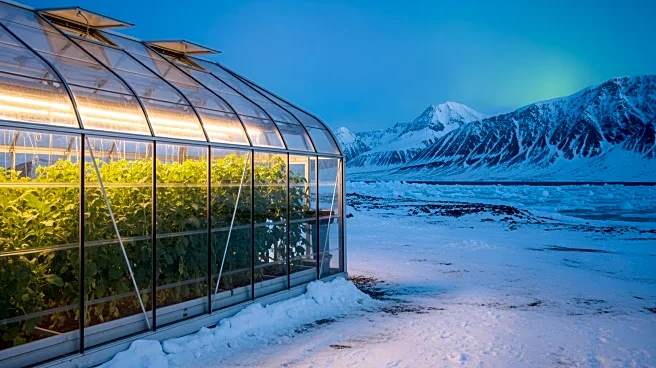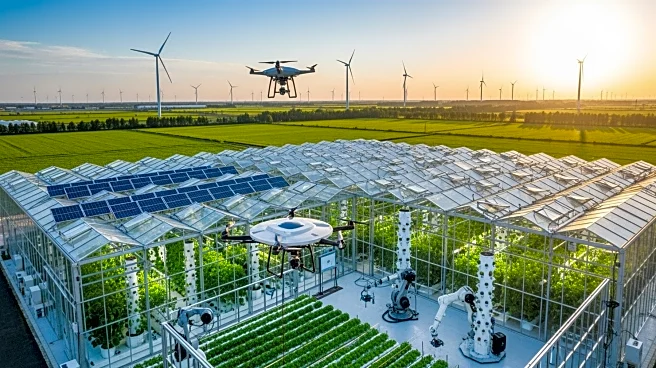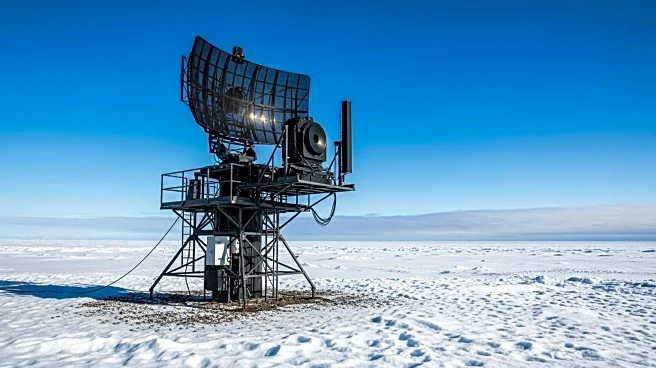What's Happening?
A research project in Canada's Arctic is enabling Inuit communities to grow fresh produce year-round using high-tech greenhouses. These greenhouses, situated inside insulated shipping containers, utilize
artificial lights and renewable energy sources like wind turbines and solar panels. The initiative, partially funded by the Canadian Space Agency, aims to address food insecurity by providing locally grown fruits and vegetables, such as strawberries and tomatoes, to the community.
Why It's Important?
This project represents a significant advancement in addressing food insecurity in remote and inhospitable climates. By enabling year-round produce cultivation, it offers a sustainable solution to the high cost and limited availability of fresh food in Arctic regions. The initiative could serve as a model for other communities facing similar challenges, potentially transforming food supply chains and improving nutritional outcomes.
What's Next?
The project plans to increase the quantity of produce grown and explore economic sustainability through the processing and export of local products. As the initiative expands, it may attract further investment and interest from other remote communities seeking to replicate its success. Continued collaboration with local stakeholders will be crucial in ensuring the project's long-term viability.
Beyond the Headlines
The use of technology in agriculture, particularly in challenging environments, highlights the potential for innovation to address global food security issues. This project underscores the importance of integrating renewable energy and sustainable practices in food production, which could influence future agricultural policies and research.











